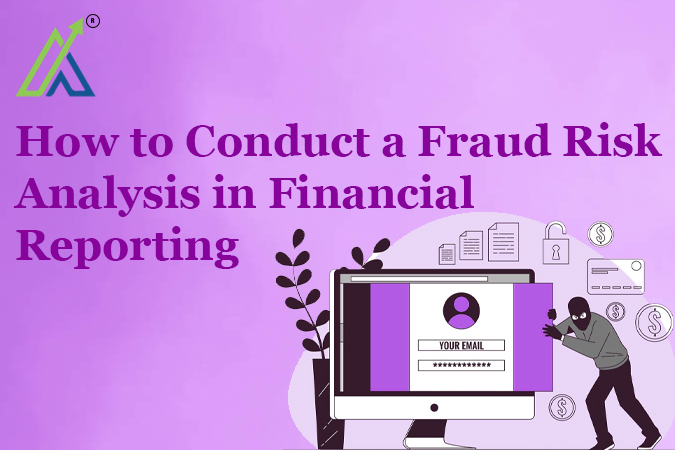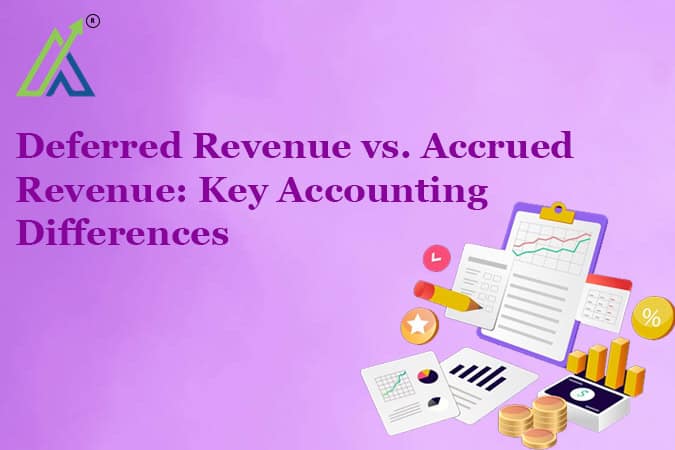In India, scandals like the Satyam fiasco or the recent IL&FS collapse prove that even giants crumble when fraud risk management fails. For commerce students eyeing careers in auditing or finance and chartered accountants navigating boardrooms, understanding how to dissect fraud risk in financial statements isn’t optional. It’s survival. Here’s how to conduct a fraud risk analysis.
What is Financial Reporting Fraud?
Financial Statement Fraud isn’t creative accounting—it’s manipulation. Think inflated revenues, hidden liabilities, or fake assets. Picture a company overstating sales to attract investors or understating expenses to dodge taxes. The goal? Deception. The tools? Material Misstatement, forged documents, or complex transactions designed to blur reality. In India, where family-run businesses dominate and regulatory gaps persist, accounting fraud thrives when internal controls are weak.
Steps to conduct a Fraud Risk Analysis in Financial Reporting
This systematic methodology will enable you to properly do a fraud risk analysis in financial reporting, therefore assisting you to find possible fraud risks and implement required controls:
Step 1: Map the Fraud Risk Factors
Fraud does not prosper in solitude. Fraud Risk Factors are the red flags. Start with the incentive-pressure trio:
- Management incentives: Bonuses tied to unrealistic targets.
- Industry pressures: Sectors like real estate or NBFCs (think DHFL) battling liquidity crunches.
- Personal greed: Promoters siphoning funds (à la Nirav Modi).
Next, assess opportunities:
- Poor financial controls (e.g., no segregation of duties).
- Complex group structures (common in Indian conglomerates).
- Lenient audit procedures or complacent boards.
Lastly, attitude: A culture that normalizes “minor adjustments” or silences whistleblowers.
Step 2: Utilize Fraud Risk Evaluation Instruments
Fraud Risk Assessment Tools aren’t magic—they’re systematic. Start with forensic accounting techniques. Unlike routine financial audits, forensic accountants dig deeper. They trace discrepancies in accounts receivable, spot fake vendors in accounts payable, or flag inventory mismatches. Tools like Benford’s Law analyze numerical patterns to detect anomalies (e.g., 80% of invoices ending with “5”).
Use financial fraud detection techniques like ratio analysis. Sudden spikes in gross margins without market justification? That’s a red fraud risk indicator. Compare associated data—if a textile firm in Surat reports double the industry’s ROI, dig deeper.
Step 3: Strengthen Internal Controls
Internal controls are your first line of defense. For Indian SMEs, where “trust” often overrules processes, this is critical. Examples:
- Segregation of duties: The person approving payments shouldn’t reconcile bank statements.
- Mandatory leave policies: Rotate staff to uncover hidden frauds (e.g., a clerk embezzling cash during long tenures).
- Whistleblower mechanisms: Mandated under the Companies Act 2013 but often ignored.
Automate where possible. Use ERP systems to flag unusual transactions—say, a junior employee approving a ₹50 lakh vendor payment. Align with Indian Accounting Standards (Ind AS) to ensure transparency.
Step 4: Audit Procedures
The methods, procedures, and techniques used by auditors to gather trustworthy audit data so they may make an informed assessment of an organization’s financial health are known as audit procedures. To ascertain the veracity and accuracy of a company’s financial statements, audit procedures are carried out. A company’s financial reputation and credibility in the eyes of its clients, the market, and possible investors are enhanced by the consistent use of these processes.
- Substantive testing: 100% of Q4 transactions should be tested for high-risk areas (such revenue recognition).
- Analytical procedures: Compare declared revenues with GST filings or bank deposits.
- Third-party confirmations: Contact customers/suppliers directly to confirm outstanding balances.
In India, where cash transactions linger, scrutinize petty cash logs. A ₹10,000 daily withdrawal might hide a ₹3.6 crore annual leak.
Step 5: Fraud Prevention
The goal of fraud prevention is to eliminate incentives, not to apprehend criminals.
- Tone at the top: If promoters flout rules (e.g., diverting loans to shell companies), employees will follow.
- Regular training: Teach staff to spot fraud risk indicators like missing documents or sudden lifestyle upgrades.
- Robust IT systems: Deploy AI to monitor real-time data. A Mumbai-based fintech startup recently used machine learning to flag ₹2 crore in fake invoices within weeks.
Step 6: Forensic Accounting
When fraud surfaces, forensic accounting takes center stage. It’s part detective work, part litigation support.
- Asset tracing: Follow the money trail—offshore accounts, benami properties.
- Digital forensics: Recover deleted emails or WhatsApp chats (yes, Indian courts accept these as evidence).
- Expert testimony: Present findings in SEBI hearings or NCLT (National Company Law Tribunal) disputes.
In the PNB scam, forensic accountants unraveled how Letters of Undertaking (LoUs) were forged for 7 years.
Step 7: Compliance Isn’t Optional
Financial compliance isn’t a burdensome process—it’s a protective measure. It’s essential for safeguarding the business, ensuring its integrity, and avoiding legal or financial risks.
- Regular audits: Mandate financial audits by rotation (Companies Act 2013).
- Disclosure norms: SEBI’s LODR (Listing Obligations and Disclosure requirement) regulations require detailed risk reporting for listed entities.
- Whistleblower protection: The Sarbanes-Oxley Act (SOX) isn’t Indian, but MNCs here adopt its principles.
Questions to understand your ability
Q1.) What is the first step in conducting a fraud risk analysis in financial reporting?
A) Strengthen internal controls
B) Deploy fraud risk assessment tools
C) Map the fraud risk factors
D) Forensic accounting
Q2.) Which of the following is an example of a tool used in fraud risk evaluation?
A) Segregation of duties
B) Financial fraud detection techniques like ratio analysis
C) Whistleblower mechanisms
D) Regular audits
Q3.) Why is segregation of duties important in preventing fraud?
A) It helps auditors to test 100% of transactions
B) It reduces the potential for fraud by preventing any single person from handling all aspects of a transaction
C) It improves the accuracy of financial statements
D) It ensures compliance with tax regulations
Q4.) Which of the following is a key aspect of fraud prevention?
A) Detecting fraud after it occurs
B) Increasing audit frequency
C) Eliminating the incentives that encourage fraudulent behavior
D) Relying solely on whistleblower mechanisms
Q5.) What does forensic accounting primarily involve when fraud is detected?
A) Enhancing company culture
B) Asset tracking and recovering digital evidence
C) Training employees on fraud prevention
D) Conducting routine audits
Conclusion
In conclusion, conducting a fraud risk analysis in financial reporting is crucial for detecting, preventing, and addressing financial fraud. By mapping fraud risk factors, utilizing specialized tools, strengthening internal controls, and ensuring compliance, organizations can safeguard their financial integrity. Through proactive measures like forensic accounting and fraud prevention strategies, businesses can protect themselves from significant losses, ensuring long-term stability and credibility in the market.
FAQ's
Financial reporting fraud involves manipulating financial statements, such as inflating revenues or hiding liabilities, to deceive investors or avoid taxes.
Unrealistic bonuses or targets can motivate management to manipulate financial data to meet performance goals, increasing the risk of fraud.
Management incentives, industry pressures, personal greed, inadequate financial controls, and a culture that accepts “minor adjustments” are the main elements causing key fraud risk.
Forensic accounting methods, ratio analysis, and Benford’s Law—which helps to find irregularities in financial data—are among the fraud risk assessment instruments.
Substantive testing of high-risk areas, analytical procedures, and third-party confirmations help auditors detect discrepancies and validate financial statements.
Fraud prevention focuses on eliminating incentives for fraud, such as by setting the right tone at the top, providing regular training, and using robust IT systems to monitor activities.
Through consistent audits and correct disclosures, financial compliance protects the company by guaranteeing openness, legal risk avoidance, and integrity maintenance.





